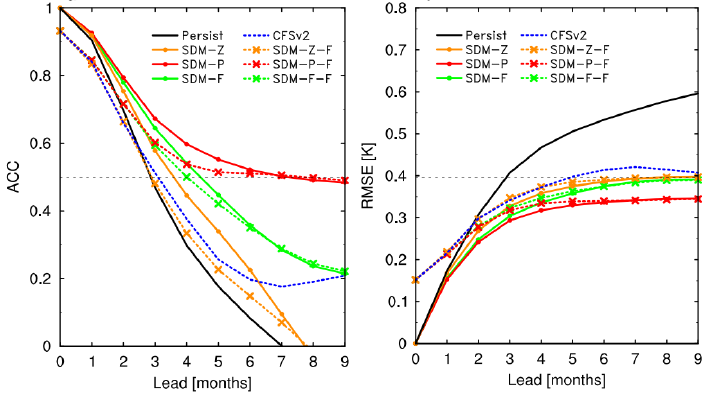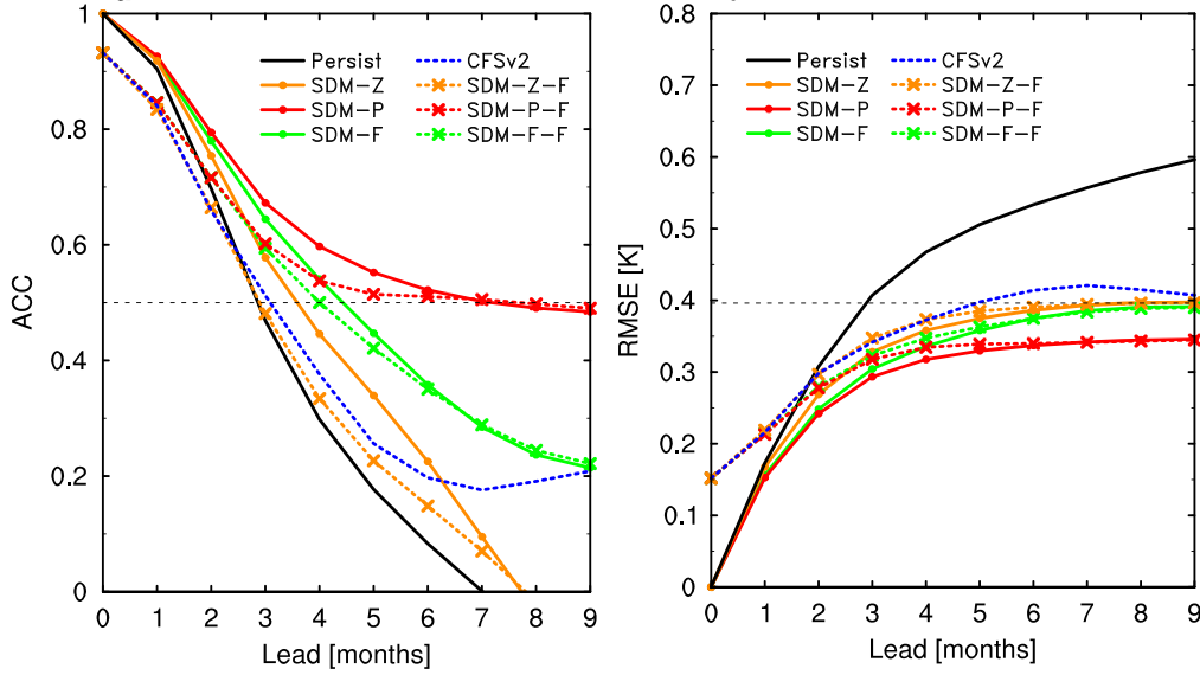Improved Predictability of the Indian Ocean Dipole Using Seasonally Modulated ENSO Forcing Forecasts
 Figure: (a) Anomaly correlation coefficient (ACC) and (b) root‐mean‐square errors (RMSE) (unit: K) between observed and predicted DMI, as a function of lead time for the individual models: persistence (black solid), CFSv2 (blue dashed), cross validated SDMs.
Figure: (a) Anomaly correlation coefficient (ACC) and (b) root‐mean‐square errors (RMSE) (unit: K) between observed and predicted DMI, as a function of lead time for the individual models: persistence (black solid), CFSv2 (blue dashed), cross validated SDMs.
Abstract
Despite recent progress in seasonal forecast systems, the predictive skill for the Indian Ocean Dipole (IOD) remains typically limited to a lead‐time of one season or less in both dynamical and empirical models. Here we develop a simple stochastic‐dynamical model (SDM) to predict the IOD using seasonally modulated El Niño‐Southern Oscillation (ENSO) forcing together with a seasonally modulated Indian Ocean coupled ocean‐atmosphere feedback. The SDM, with either observed or forecasted ENSO forcing, exhibits generally higher skill and longer lead times for predicting IOD events than the operational Climate Forecast System Version 2 and the SINTEX system. The improvements mainly originate from better prediction of ENSO‐dependent IOD events and from reducing false alarms. These results affirm our hypothesis that operational IOD predictability beyond persistence is largely controlled by ENSO predictability and the signal‐to‐noise ratio of the system. Therefore, potential future ENSO improvements in models should translate to more skillful IOD predictions.